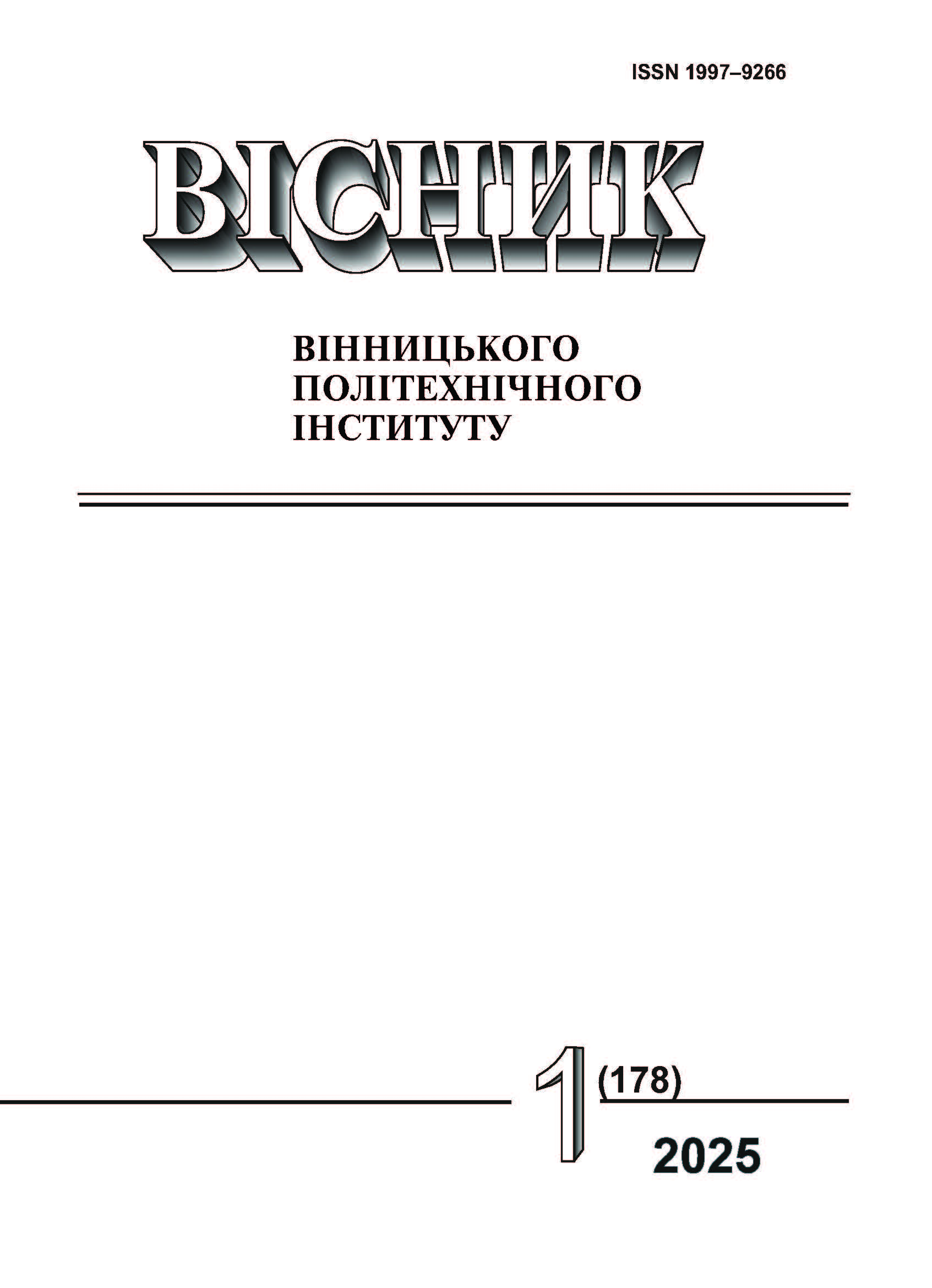Capture of Carbon Dioxide in a Rotated Packed Bed with Wire Mesh Packing
DOI:
https://doi.org/10.31649/1997-9266-2025-178-1-43-50Keywords:
mass transfer, rotated packed bed, biogas, wire mesh packing, gas purificationAbstract
The calculation of mass transfer efficiency in a centrifugal apparatus with a wire mesh packing has been performed, taking into account the complex interaction of structural, hydrodynamic, and physicochemical parameters of the process. In this study, the developed methodology is based on empirical equations that describe the mechanisms of mass transfer between the gas and liquid phases under conditions of intense turbulent flow. A distinctive feature of the calculations is the application of similarity criteria, such as Reynolds, Weber, and Galileo numbers, which make it possible to account for the complex influence of parameters related to the apparatus design, properties of the working media, and hydrodynamic conditions.
The modeling is based on equations for determining the mass transfer coefficient, which consider the influence of such structural parameters of the apparatus as the radius of the packing, the height of the wire mesh layer, and the cell size of the mesh. Hydrodynamic characteristics, including the flow velocity of the gas and liquid, the density and viscosity of both phases, as well as the surface tension of the liquid, were also taken into account. These parameters are critical to achieving a high degree of phase contact and enhancing mass transfer efficiency.
The calculations made it possible to determine the mass transfer coefficient as a function of the gas and liquid flow rates, their thermophysical properties, and the geometric characteristics of the apparatus design. It was assumed that the final concentration of carbon dioxide at the outlet of the apparatus equals zero, allowing for the modeling of ideal conditions to evaluate the maximum efficiency of the process.
The results of the study enabled not only the prediction of mass transfer process efficiency under various operating conditions but also the optimization of the apparatus design. This made it possible to identify the parameters that ensure the most effective separation of gas and liquid phases. In particular, the influence of changes in the height of the wire mesh packing, the apparatus diameter, and the flow rates of the gas and liquid on efficiency indicators was assessed.
Thus, the calculations, carried out, enabled to evaluate the relationship between the geometric parameters of the packing, flow velocity, and mass transfer efficiency. This has practical significance for the industrial implementation of centrifugal apparatuses with wire mesh packing in various fields. It is especially relevant for areas such as gas purification from harmful components, the chemical and petrochemical industries, where intensive and stable mass transfer is required under compact operating conditions.
References
Г. Гелетуха, П. Кучерук, Ю. Матвеев, і Т. Ходаковская, «Перспективи виробництва біогазу в Україні,» Відновлювальна енергетика, № 3, с.73-77, 2011.
В. Мойсеенко, «Вплив складу біогазу на показник горіння,» Енергоефективність в будівництві та архітектурі, вип. 8, с. 231-235, 2016.
В. Баадер, Е. Доне, і М. Бреннедерфер, Біогаз: теорія і практика. Москва: Колос, 1982, 148 с.
K. J.A. de Waal, and W .J. Beek, “A comparison between chemical absorption with rapid first-order reactions and physical absorption in one packed column,” Chemical Engineering Science, vol. 22, iss. 4, pp. 585-594, April, 1967.
I. Gladich, A. Abotaleb, and A. Sinopoli, “Tuning CO2 Capture at the Gas/Amine Solution Interface by Changing the Solvent Polarity,” The Journal of Physical Chemistry B, vol. 124/45, pp. 10245-10256, November, 2020.
Wei Zhang, Peng Xie, Yuxing Li, Lin Teng, and Jianlu Zhu, “Hydrodynamic characteristics and mass transfer performance of rotating packed bed for CO2 removal by chemical absorption,” Journal of Natural Gas Science and Engineering, vol. 79, pp. 110-123, July, 2020.
K. P. Dhaneesh, and P. Ranganathan, “A comprehensive review on the hydrodynamics, mass transfer and chemical absorption of CO2 and modelling aspects of rotating packed bed,” Separation and Purification Technology, vol. 295, pp. 392-408, April, 2022.
M. Jasim, D. Eimer, and G. Rochelle, “Carbon Dioxide Absorption and Desorption in Aqueous Monoethanolamine Solution in a Rotating Packed Bed,” Industrial and Engineering Chemistry Research, vol. 46, iss. 9, pp. 2823-2833, April 2007.
A. Solomakha, P. Barabash, and V. Rifert, “Experimental investigation of mass transfer characteristics in centrifugal humidifier,” Thermal Science and Engineering Progress, vol. 53, pp. 221-234, August, 2024, 102769.
Youzhi Liu, Fagfang Zhang, Deyin Gu, Guisheng Qi, Weizhou Jiao, and Xiaoyan Chen, “Gass-Phase Mass Transfer Characteristics in a Counter Airflow Shear Rotating Packed Bed,” The Canadian Journal of Chemical Engineering, vol. 94, iss. 4, pp. 771-778, January, 2016.
Downloads
-
pdf (Українська)
Downloads: 42
Published
How to Cite
Issue
Section
License

This work is licensed under a Creative Commons Attribution 4.0 International License.
Authors who publish with this journal agree to the following terms:
- Authors retain copyright and grant the journal right of first publication.
- Authors are able to enter into separate, additional contractual arrangements for the non-exclusive distribution of the journal's published version of the work (e.g., post it to an institutional repository or publish it in a book), with an acknowledgment of its initial publication in this journal.
- Authors are permitted and encouraged to post their work online (e.g., in institutional repositories or on their website) prior to and during the submission process, as it can lead to productive exchanges, as well as earlier and greater citation of published work (See The Effect of Open Access).





